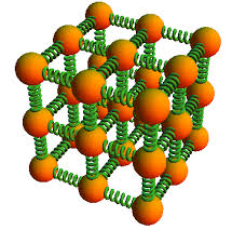I came upon the following question:
A solid expands on heating because:
a) the potential energy of interaction between atoms in the solid is asymmetric about the equilibrium positions of atoms; or
b) the frequency of vibrations of atoms increases.
My attempt:
I did not make a huge deal out of the question, and simply thought that it is due to the increase in frequency of vibrations, which now causes greater oscillations about the lattice points, which in turn increases the average volume occupied by atoms, leading to expansion. However the answer is a).
Can someone explain, possibly using some model (like the spring-particle model of the lattice), why this is so, and why b) is NOT a cause of expansion?

